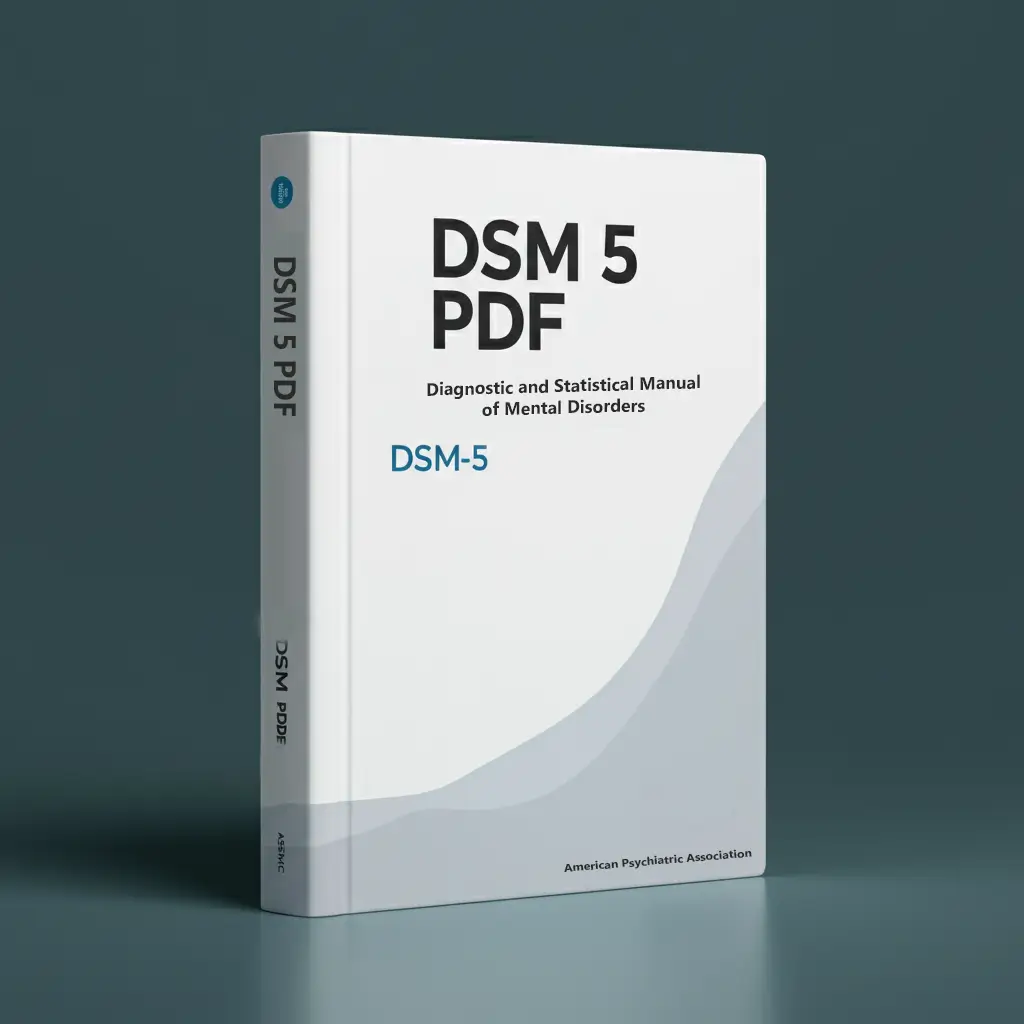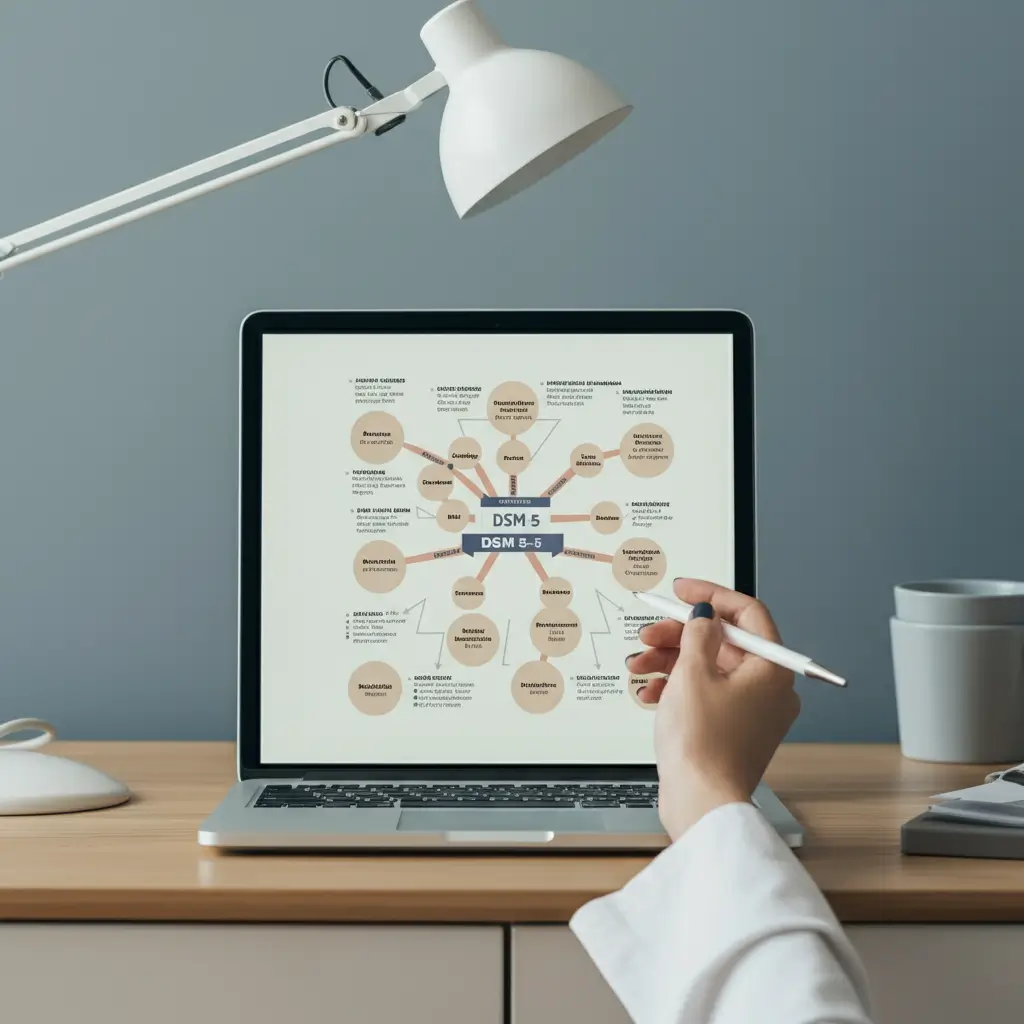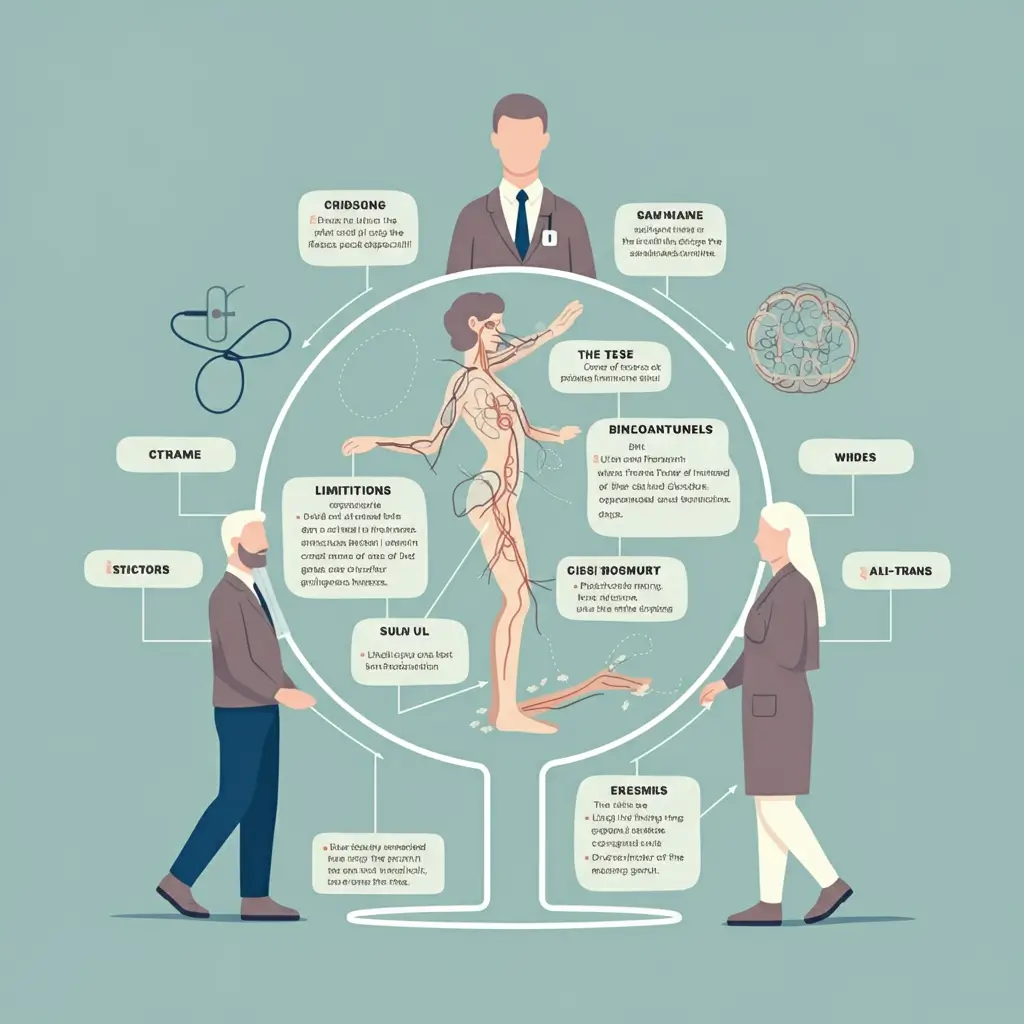Everything Mental Health Professionals Need to Know
The Diagnostic and Statistical Manual of Mental Disorders, Fifth Edition (DSM-5) is an essential tool in the field of mental health. Whether you’re a psychologist, therapist, counselor, or psychiatrist, understanding the DSM-5 is critical to making accurate diagnoses and developing effective treatment plans.
But how exactly does this manual work, and what sets the DSM-5 apart from its predecessors? This blog will walk you through the key aspects of the DSM-5, from its structure and changes to its practical applications, and how to access it legally in PDF format. Equipped with this understanding, you’ll be better able to apply it in clinical practice and even see how it shapes the way we think about mental health.

The Importance of the DSM-5 in Mental Health
The DSM-5 serves as the go-to guide for diagnosing and classifying mental disorders. Published by the American Psychiatric Association (APA), it standardizes criteria for diagnosis, ensuring that mental health professionals are speaking the same language when discussing symptoms, conditions, and treatments.
As Dr. Jane Smith, a clinical psychologist, explains, “DSM-5 provides a standardized language for mental health professionals, facilitating communication and diagnosis.” This common framework is particularly important not just for mental health practitioners, but also for students, researchers, and even insurance providers who use it to make decisions regarding treatment coverage.
Why It Matters
- Evidence-Based – DSM-5 criteria are rooted in the latest scientific research and real-world clinical evidence.
- Standardization – It ensures consistent diagnoses across different clinicians and regions.
- Comprehensive Coverage – Over 300 mental disorders are detailed within its pages.
Key Changes from DSM-IV to DSM-5
The transition from DSM-IV to DSM-5 brought significant changes, reflecting advances in psychology and neuroscience. Many of these revisions aimed to improve the accuracy of diagnoses while providing a more nuanced understanding of mental health conditions.

Autism Spectrum Disorder (ASD)
DSM-5 combined previous subcategories (e.g., Asperger’s Syndrome) into a single diagnosis to better represent the spectrum of symptoms.

Multiaxial Diagnoses
The five-axis diagnostic system was replaced with a simpler single system focused on overall functioning.

New Disorders Added
Conditions like Disruptive Mood Dysregulation Disorder (DMDD) and Hoarding Disorder are now included.

Revised Criteria:
Subtle changes in criteria, such as those for Major Depressive Disorder and PTSD, offer more precision and sensitivity.
One case example involves a 45-year-old woman with a history of trauma being diagnosed with PTSD based on DSM-5’s updated criteria, which now include changes related to trauma severity and emotional regulation.
Practical Applications of DSM-5 in Clinical Practice
The DSM-5 is a practical tool that mental health professionals rely on daily. Its standardized criteria ensure clarity and accuracy across myriad situations. Below are a few examples:
- Case Example 1 – Major Depressive Disorder: A male client presenting with persistent sadness, fatigue, and loss of interest can be evaluated using DSM-5 criteria for depression. This ensures the diagnosis is precise and not mistaken for a grief-related disorder.
- Case Example 2 – Autism Spectrum Disorder: The DSM-5 helps clarify the varied presentations of Autism Spectrum Disorder in children, allowing clinicians to tailor interventions effectively.
- Differentiating Conditions: For instance, DSM-5 criteria help distinguish Adjustment Disorder from Major Depressive Disorder in cases where individuals experience life stressors.
Dr. John Doe, a psychiatrist, emphasizes that “understanding the DSM-5 is crucial for accurate assessment and effective treatment planning in mental health care.”

How to Access and Download the DSM-5 PDF Legally
If you’re a mental health professional or student looking for the DSM-5, it’s important to access it through legitimate means to ensure legality and accuracy.
Official Purchase Options
- APA Publishing Website: The DSM-5 is available for purchase as a hardcover, paperback, or digital download (PDF).
- E-Book Platforms: Platforms like Amazon Kindle and Google Books offer electronic versions.
- Institutional Libraries: Many universities and hospitals provide free access to the DSM-5 for their students, educators, and staff through institutional subscriptions.
Free Resources
While you should avoid pirated versions, the APA occasionally releases excerpts or related resources for free. Check their website for updates and supplementary tools.

Limitations and Criticisms of DSM-5
The DSM-5 is not without its challenges and criticisms. Understanding its limitations is key to using it responsibly.
Common Critiques
- Over-Medicalization: Critics argue that some conditions pathologize normal variations in behavior, such as grief or temper tantrums.
- Cultural Sensitivity: While the DSM-5 includes tools for cultural considerations, it’s still viewed as rooted in Western perspectives.
- Complexity in Practice: Some practitioners find that DSM-5 criteria can be too rigid in cases where symptoms don’t align neatly with a single diagnosis.
Dr. Emily White, a mental health counselor, advises, “While DSM-5 is a valuable tool, it’s important to consider individual and cultural factors in diagnosis.”
Understanding the Structure and Sections of the DSM-5
The DSM-5 is organized into three main sections, making it a versatile tool for mental health professionals.
Section I – Basics
This section offers a comprehensive introduction, outlining the purpose and significance of DSM in its specific context. It explains how DSM is designed to support users in achieving their goals and highlights its key functionalities. Additionally, it provides clear and practical instructions on how to use DSM effectively, ensuring users can navigate and apply it with ease for the best possible outcomes.
Section II – Diagnostic Criteria and Codes
The manual provides detailed outlines of disorders, including diagnostic criteria, prevalence, onset age, and key features. It offers clear guidance for diagnosing conditions like Major Depressive Disorder and distinguishing them from similar disorders, enabling clinicians to make accurate diagnoses and deliver effective care.
Section III – Emerging Measures and Models
This section highlights tools like cultural formulation interviews and dimensional assessments to better understand individual experiences and behaviors. It also proposes research to improve diagnostic accuracy and culturally sensitive clinical practices.
Resources for Further Learning
If you want to deepen your understanding of the DSM-5, explore the following resources:
- Books and Journals: Consider reading complementary materials such as Essentials of DSM-5 Assessment or APA-published journals.
- Training Programs: The APA offers training modules and certification programs for using DSM-5 effectively.
- Workshops and Webinars: Various psychological associations host events to explore the DSM-5 and its implications in practice.
Enhancing Mental Health Practice with DSM-5
The DSM-5 represents a powerful resource for mental health professionals seeking to make informed diagnoses and deliver high-quality care. By staying informed about its updates, structure, and application, clinicians can better serve their clients while navigating the complexities of mental health care.
For those ready to explore this resource, make sure to access it legally and leverage supplementary training to maximize its potential. Understanding the DSM-5 is about more than diagnosing disorders; it’s a step toward creating a healthier, more empathetic world.
-

How Clinicians Use the DSM-5 to Diagnose Mental Health Conditions
Mental health diagnosis is a nuanced and complex process, requiring precision, consistency, and…
-

DSM-5 vs. DSM-IV: What Has Changed and Why It Matters
The Diagnostic and Statistical Manual of Mental Disorders (DSM) serves as a compass…
-

The Role of the DSM-5 in Modern Psychiatry and Psychology
The field of mental health is constantly evolving, and with it, the tools…
